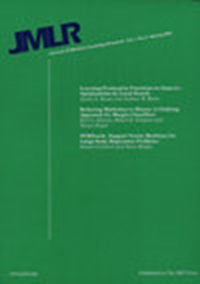RNN-Attention Based Deep Learning for Solving Inverse Boundary Problems in Nonlinear Marshak Waves
IF 5.2
3区 计算机科学
Q1 AUTOMATION & CONTROL SYSTEMS
引用次数: 0
Abstract
. Radiative transfer, described by the radiative transfer equation (RTE), is one of the dominant energy exchange processes in the inertial confinement fusion (ICF) experiments. The Marshak wave problem is an important benchmark for time-dependent RTE. In this work, we present a neural network architecture termed RNN-attention deep learning (RADL) as a surrogate model to solve the inverse boundary problem of the nonlinear Marshak wave in a data-driven fashion. We train the surrogate model by numerical simulation data of the forward problem, and then solve the inverse problem by minimizing the distance between the target solution and the surrogate predicted solution concerning the boundary condition. This minimization is made efficient because the surrogate model by-passes the expensive numerical solution, and the model is differentiable so the gradient-based optimization algorithms are adopted. The effectiveness of our approach is demonstrated by solving the inverse boundary problems of the Marshak wave benchmark in two case studies: where the transport process is modeled by RTE and where it is modeled by its nonlinear diffusion approximation (DA). Last but not least, the importance of using both the RNN and the factor-attention blocks in the RADL model is illustrated, and the data efficiency of our model is investigated in this work.基于rnn -注意力的深度学习求解非线性马沙克波反边界问题
。辐射传递是惯性约束聚变(ICF)实验中主要的能量交换过程之一,用辐射传递方程(RTE)来描述。马沙克波问题是时变RTE的一个重要基准。在这项工作中,我们提出了一种称为rnn -注意力深度学习(RADL)的神经网络架构作为代理模型,以数据驱动的方式解决非线性马沙克波的逆边界问题。我们利用正演问题的数值模拟数据训练代理模型,然后在边界条件下通过最小化目标解与代理预测解之间的距离来求解逆问题。由于替代模型绕过了昂贵的数值解,并且模型是可微的,因此采用了基于梯度的优化算法,从而使这种最小化变得高效。通过在两个案例研究中解决马沙克波基准的逆边界问题,我们的方法的有效性得到了证明:其中输运过程是由RTE建模的,而它是由其非线性扩散近似(DA)建模的。最后,说明了在RADL模型中同时使用RNN和因子注意块的重要性,并对我们的模型的数据效率进行了研究。
本文章由计算机程序翻译,如有差异,请以英文原文为准。
求助全文
约1分钟内获得全文
求助全文
来源期刊

Journal of Machine Learning Research
工程技术-计算机:人工智能
CiteScore
18.80
自引率
0.00%
发文量
2
审稿时长
3 months
期刊介绍:
The Journal of Machine Learning Research (JMLR) provides an international forum for the electronic and paper publication of high-quality scholarly articles in all areas of machine learning. All published papers are freely available online.
JMLR has a commitment to rigorous yet rapid reviewing.
JMLR seeks previously unpublished papers on machine learning that contain:
new principled algorithms with sound empirical validation, and with justification of theoretical, psychological, or biological nature;
experimental and/or theoretical studies yielding new insight into the design and behavior of learning in intelligent systems;
accounts of applications of existing techniques that shed light on the strengths and weaknesses of the methods;
formalization of new learning tasks (e.g., in the context of new applications) and of methods for assessing performance on those tasks;
development of new analytical frameworks that advance theoretical studies of practical learning methods;
computational models of data from natural learning systems at the behavioral or neural level; or extremely well-written surveys of existing work.
 求助内容:
求助内容: 应助结果提醒方式:
应助结果提醒方式:


